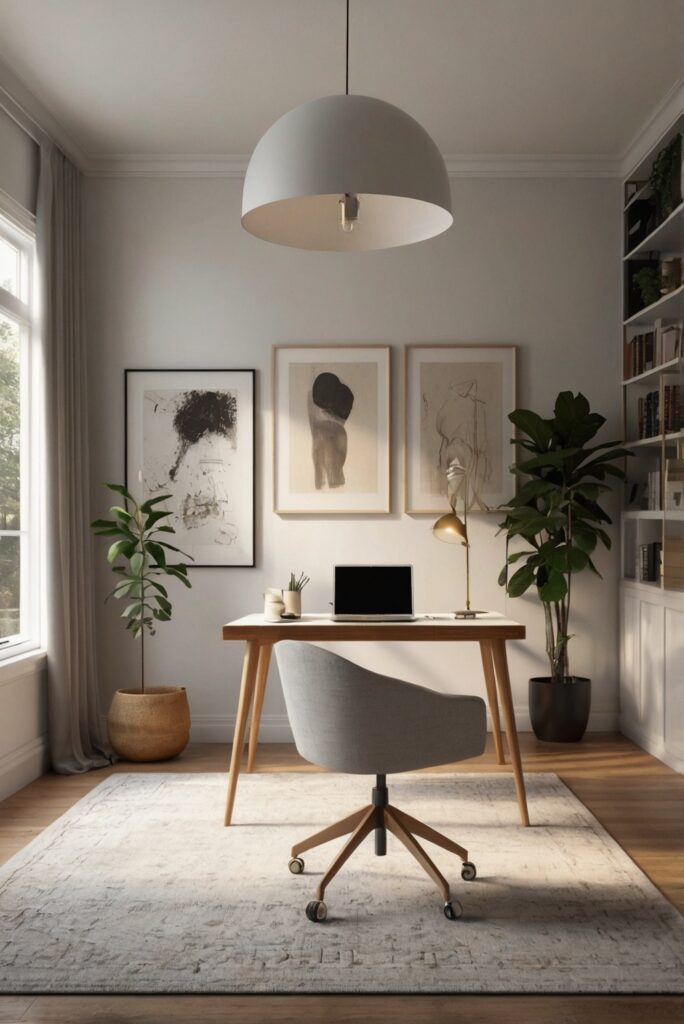Discover the advantages of incorporating smart lighting into your home office routine. Upgrade your workspace with innovative technology for a more productive and comfortable environment.
**What Are the Benefits of Using Smart Lighting in a Home Office?**
**Answer:** Smart lighting in a home office offers several benefits for both productivity and ambiance. It allows you to easily adjust the brightness and color temperature to suit your tasks and mood. Smart lighting can be scheduled to align with your work hours, helping regulate your circadian rhythm. Additionally, energy-efficient LED bulbs used in smart lighting can reduce energy consumption and costs. Properly lit spaces can enhance focus and reduce eye strain, ultimately improving work efficiency. With smart lighting, you can create a conducive and personalized environment for maximum productivity while working from home.
Enhanced Productivity:
One of the key benefits of using smart lighting in a home office is the enhanced productivity it can provide. Smart lighting systems allow you to customize the lighting in your workspace to suit your needs. You can adjust the brightness and color of the lights to create an environment that is conducive to focus and concentration. This can help you stay alert and productive throughout the day, leading to better work performance.
Improved Energy Efficiency:
Smart lighting systems are designed to be energy-efficient, which can lead to cost savings on electricity bills. These systems use LED lights and sensors to automatically adjust the lighting based on natural light levels and occupancy. This means that lights will only be on when needed, reducing energy waste. Additionally, you can schedule the lighting to turn on and off at specific times, further optimizing energy usage.
Health and Well-being:
Proper lighting is essential for maintaining good health and well-being, especially when working long hours in a home office. Smart lighting systems offer features such as tunable white light, which allows you to adjust the color temperature of the lights to mimic natural daylight. This can help regulate your circadian rhythm and improve your mood, focus, and overall health. By providing the right lighting conditions, smart lighting can contribute to a healthier work environment.
Convenience and Flexibility:
Smart lighting systems can be controlled remotely using a smartphone or voice commands, offering convenience and flexibility in adjusting the lighting settings. You can create preset lighting scenes for different tasks, such as reading, working, or relaxing. With the ability to control the lights from anywhere, you can easily customize the lighting to suit your preferences and create the ideal ambiance for maximum productivity.
Enhanced Security:
Smart lighting systems can also enhance the security of your home office. You can program the lights to turn on and off at specific times, creating the appearance that someone is present even when you’re away. Additionally, motion sensors can trigger the lights to turn on in response to movement, deterring potential intruders. By integrating smart lighting with your home security system, you can create a safer work environment.
In conclusion, incorporating smart lighting into your home office can offer a range of benefits, including enhanced productivity, improved energy efficiency, better health and well-being, convenience and flexibility, and enhanced security. By leveraging the features of smart lighting systems, you can create a workspace that is tailored to your needs and preferences, ultimately leading to a more efficient and enjoyable working environment. With the advancements in technology, smart lighting is becoming increasingly accessible and affordable, making it a worthwhile investment for anyone looking to optimize their home office setup.
1. How can smart lighting in a home office improve productivity?
Smart lighting in a home office can improve productivity by mimicking natural light patterns, helping to regulate the body’s internal clock and maintain a consistent sleep-wake cycle. By adjusting the color temperature and intensity of the light throughout the day, smart lighting can enhance alertness during working hours and promote relaxation in the evening, leading to better focus and productivity. Studies have shown that exposure to natural light can positively impact mood and cognitive performance, making smart lighting an essential tool for creating an optimal work environment in a home office.
2. What are the energy-saving benefits of using smart lighting in a home office?
Smart lighting systems are designed to be energy-efficient, using sensors and automation to adjust lighting levels based on occupancy and natural light conditions. By optimizing the use of artificial light sources, smart lighting can reduce energy consumption and lower electricity bills. Additionally, LED bulbs, which are commonly used in smart lighting systems, are more energy-efficient and have a longer lifespan compared to traditional incandescent bulbs. By incorporating smart lighting into a home office, users can contribute to environmental sustainability while enjoying cost savings.
3. How does smart lighting in a home office promote a healthier work environment?
Smart lighting in a home office can promote a healthier work environment by reducing eye strain and fatigue associated with prolonged screen time. Adjustable color temperatures and brightness levels allow users to customize the lighting to their preferences, creating a comfortable workspace that is conducive to productivity. Moreover, smart lighting systems can incorporate features such as circadian rhythm lighting, which simulates the natural progression of light throughout the day to support overall well-being. By prioritizing the health and well-being of individuals, smart lighting enhances the overall work experience in a home office setting.
4. What convenience features do smart lighting systems offer for home office users?
Smart lighting systems offer a range of convenience features that enhance the user experience in a home office. Remote control capabilities enable users to adjust lighting settings from their smartphones or voice-activated assistants, providing flexibility and convenience. Timers and scheduling features allow users to program lighting patterns based on their daily routines, ensuring that the workspace is always well-lit and ready for use. Integration with smart home ecosystems enables seamless connectivity with other devices, such as thermostats and security systems, creating a cohesive and interconnected home office environment.
5. How can smart lighting in a home office contribute to a more aesthetically pleasing workspace?
Smart lighting in a home office can contribute to a more aesthetically pleasing workspace by offering a wide range of lighting options and effects. Color-changing LED bulbs can create ambiance and set the mood for different tasks or activities, enhancing the overall atmosphere of the workspace. Dimmable lights allow users to control the brightness levels to suit their preferences, creating a personalized and comfortable environment. Additionally, smart lighting fixtures come in a variety of designs and styles, allowing users to choose fixtures that complement their decor and contribute to a cohesive and visually appealing home office space.



